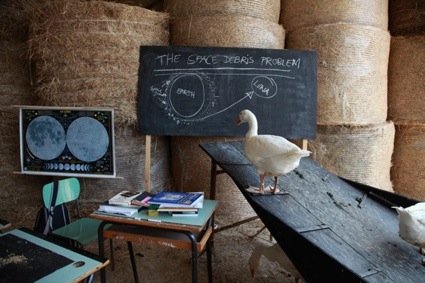 Agnes Meyer-Brandis: Moon Goose Colony, Pollinaria, 2011
Agnes Meyer-Brandis: Moon Goose Colony, Pollinaria, 2011
On Saturday i went to The Arts Catalyst’s Open Think Tank Late Breakfast, the round table discussion was part of a series of events that frame the exhibition Republic of the Moon. Both were very good. The exhibition and the panel, that is.
The round table, orchestrated by artists in residence Sue Corke and Hagen Betzwieser from We Colonised the Moon, explored the idea of moon colonisation from the perspective of science, politics, theology, philosophy, and art. The main question panelist were looking at was: Should We Colonise the Moon? What’s the future for the Moon – theme park or quarry?
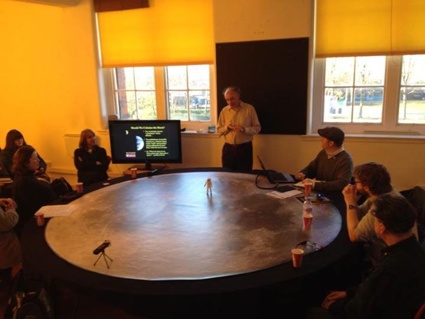 Panel ‘Should We Colonise the Moon? What’s the future for the Moon – theme park or quarry?’ on Saturday 11 at the Bargehouse. Photo by The Arts Catalyst
Panel ‘Should We Colonise the Moon? What’s the future for the Moon – theme park or quarry?’ on Saturday 11 at the Bargehouse. Photo by The Arts Catalyst
The first speaker was Ian Crawford, Professor of Planetary Science and Astrobiology at Birkbeck College, University of London. His research is mainly concerned with lunar science and exploration, and he has a significant interest in the future of space exploration.
Crawford started by answering the question Should We Colonise the Moon? with a simple “Yes, with caveat!”
Yes, because it would be good for the human race & for philosophy, to expand the horizons and the perspective on ourselves and on the universe.
The caveats are:
– The colonization should be an international endeavour (we don’t want another Cold War space race);
– It should be regulated. Parts of the Moon and of Mars are scientifically valuable. It would be a pity if they fell into purely mercantile hands and/or became mere tourist destinations;
– The physical environment is obviously very different from the ones colons found in the US or in Australia. Genuine colonization will be difficult. It would probably start with scientific outposts, small groups of people would be sent to live on a base, like the ones currently sent for research in Antarctica. Other uses of the moon such as hotels for tourists or mining for mineral resources would have to be regulated.
The United Nations treaty about the moon currently states that no one legally owns the moon but there is a case for developing the law as private companies may want to exploit it for its minerals.
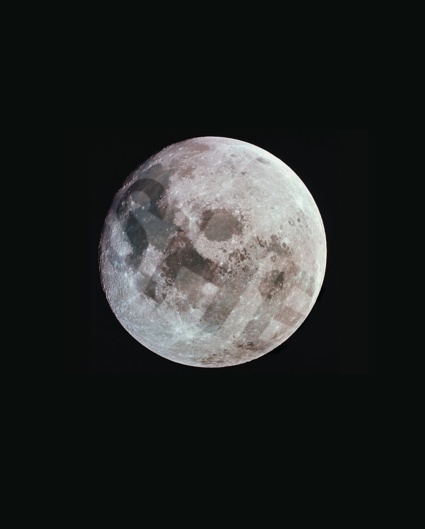 Liliane Lijn, moonmeme
Liliane Lijn, moonmeme
The other part of the question was What’s the future for the Moon – theme park or quarry?
The moon’s surface area is roughly 10% bigger than Africa.
Any space colonisation should be a unifying project for humanity. A step in that direction has been made when 12 of the main space agencies around the world have published the “Global Exploration Roadmap” (PDF) which declares the international group’s intention to work together to mount robotic and human missions to the moon, nearby asteroids, and to Mars.
At this point, someone in the audience (probably Rob La Frenais) asked about the limited scientific equipment that can be taken to the moon because it seems that on board, priority is given to supplies that would enable human beings to actually survive in space.
Professor Crawford explained that the moon is a completely airless environment but that there might be ways to extract lunar water and oxygen. For water, we would first need to confirm the existence of ice craters on the surface of the moon. The presence of ice would greatly facilitate colonization. Oxygen could be extracted from the very dry lunar rocks. It would, however, be a very energy intensive process.
(More about the views of Ian Crawford on Moon exploitation in The Telegraph.)
Another brilliant contribution was from Rev Dr Jeremy Law, the Dean of Chapel for Canterbury Christ Church University, who had been invited to give a theological perspective on moon colonization.
He made 3 important observations:
The Earth is a nurturing realm, whereas the moon is a life-denying environment. A human colony on the moon would be a celebration of human achievement, another triumph of humanity over nature.
A lunar colony has nothing to do with the colonization of the New World, it would mostly serve the interests of the already successful.
Finally, the economic investment required means that the narrative of capitalism (with its notions of efficiency and competition) would simply continue. Scientific research on the moon, for example, would thus be determined by those who can finance it.
Law believes that the main contribution of a lunar colony is the way it could reshape human religion on earth.
The last speaker was Benedict Singleton, a strategist with a background in design and philosophy. He is the author of the forthcoming book The Long Con, an alternative history of design, and regularly writes on the politics and philosophy of technology.
Singleton believes that we need deeper narratives to understand what it means to achieve moon colonization.
Another interesting point was raised by Sue Corke who reminded us of Thomas Austin, the man responsible for introducing rabbits in Australia. As we know, he had no idea that a few rabbits released on his estate would lead to an invasion of the country. At the time he had declared, “The introduction of a few rabbits could do little harm and might provide a touch of home, in addition to a spot of hunting.”
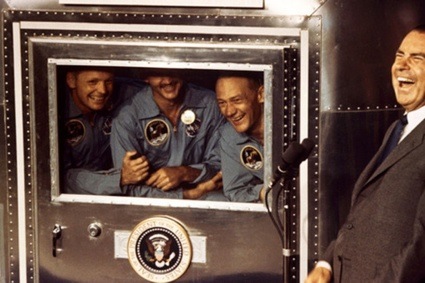
Could the equivalent happen on the moon with something human colons would bring along? Rob noted that actually in 1969, the NASA put everything that came back from the Moon – from rocks to hardware to the Apollo 12 crew – in quarantine and ran tests to make sure they didn’t come back covered with new and potentially harmful microbes or bacteria. As you can see in the photo above, it must have been a hilariously pleasant experience.
Of course, it was about protecting the Earth from potential moon germs. Not the opposite.
That’s it for my notes about the Saturday morning panel. As for the exhibition, just go! It has humour, intelligence and it’s also really good art. You don’t often get all these ingredients mixed in one show.
Agnes Meyer-Brandis is teaching geese how to fly to the moon, Leonid Tishkov never travels without his own personal moon, Katie Paterson has Beethoven’s Moonlight Sonata reflected from the moon’s surface via Earth, Liliane Lijn plans to write on the Moon using a laser beam, WE COLONISED THE MOON run a series of workshops and events as the Republic of the Moon’s official art residents.
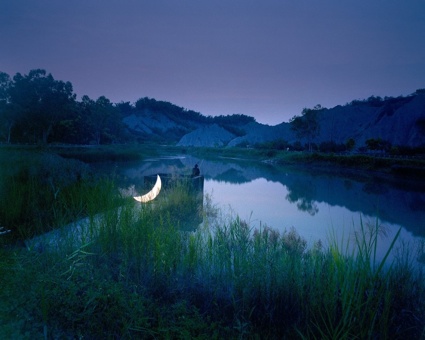 Leonid Tishkov, Private Moon in Formosa
Leonid Tishkov, Private Moon in Formosa
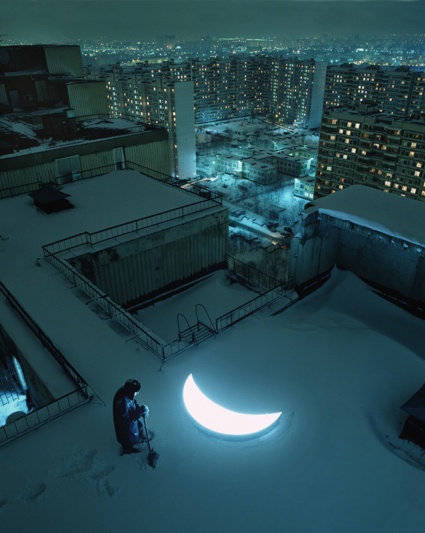 Leonid Tishkov, Private Moon, 2009
Leonid Tishkov, Private Moon, 2009
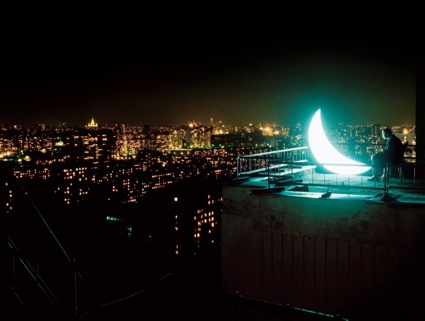 Leonid Tishkov, Private Moon Moscow studio of the artist
Leonid Tishkov, Private Moon Moscow studio of the artist
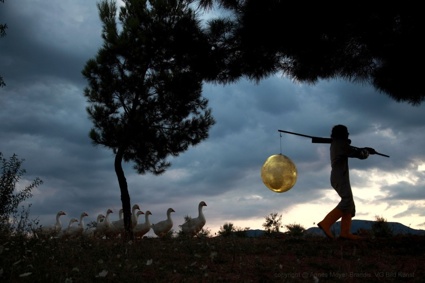 Agnes Meyer-Brandis, Moon Goose Analogue
Agnes Meyer-Brandis, Moon Goose Analogue
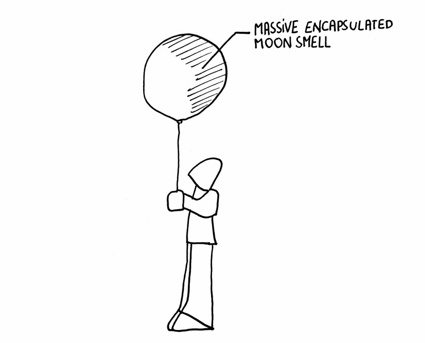 WE COLONISED THE MOON, Live Moon Smelling by artists in residence in Republic of the Moon, London 2014
WE COLONISED THE MOON, Live Moon Smelling by artists in residence in Republic of the Moon, London 2014
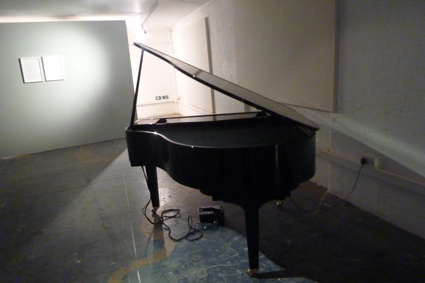 Katie Paterson, Earth-Moon-Earth
Katie Paterson, Earth-Moon-Earth
There’s only a few days left to listen to Nicola Triscott and Ian Crawford discussing Moon ownership on BBC radio 4.
Republic of the Moon is on view until 2 February 2014 at the temporary residence of The Arts Catalyst: Bargehouse, Oxo Tower Wharf on London’s South Bank.
